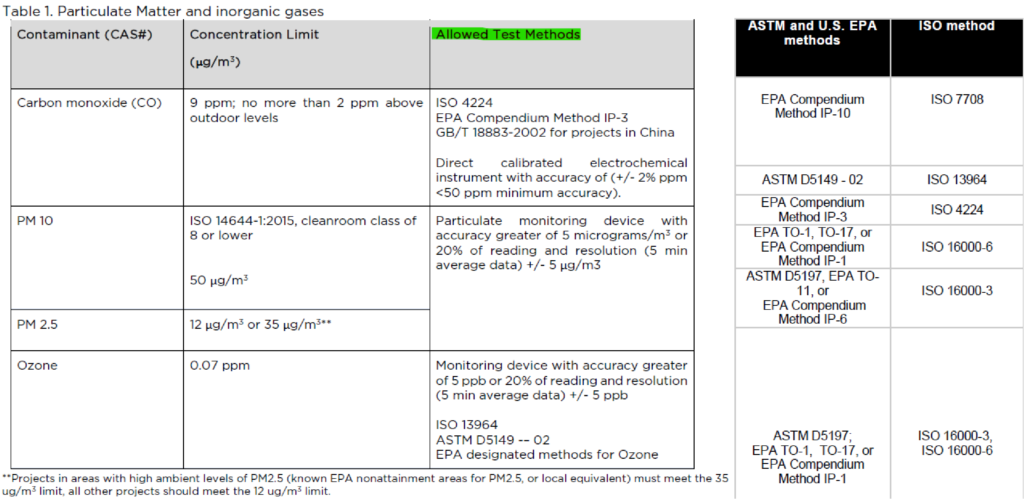When thinking about Green Building certification, it’s important to factor in the indoor environment and air quality. Indoor Environmental Quality (IEQ)/Indoor Air Quality (IAQ) are the conditions inside a building—air quality, lighting, thermal conditions, ergonomics—and their effects on occupants. Several Green Building programs emphasize IEQ/IAQ through building design considerations and therefore tend to have better indoor air quality than conventional buildings. Why is this important? Addressing IEQ/ IAQ has a positive impact on the overall human health of its occupants and can lead to an improved quality of life, less stress, and can reduce the risk of potential injuries. Here is a helpful guide to the Indoor Environmental Quality (IEQ)/Indoor Air Quality (IAQ) sections of LEED, WELL, BREEAM, and Living Building Challenge programs.
Regardless of your role in the entire certification process, you need to know the specific certifying agency, version, building type, and any additional credits the program is seeking to obtain; this will be especially helpful for the laboratory assisting with the data needs. You will see below that there are many different configurations of the IEQ/IAQ credit sections. Of these, TVOC, Formaldehyde, Ozone, PM 2.5, PM 10, and Carbon Monoxide are the most common requirements.

There are a few different letters referenced in the table. Required analysis options include those marked as both “X” and “I.” The difference is the weight they bear on the certification process. Those with an “I” must be assessed but are not used for credit or point achievements. Sections with an “E” indicate that an Exemplary or Enhanced credit option is available. This is typically in the form of a lower allowable concentration. A few marked areas are specific to the additional credit, such as Nitrogen Dioxide for WELL v2 programs. Lastly, the “O” designation is for Optional and specific to the BREEAM In-Use building types. Text in the program states in part: As a minimum, the monitoring should cover carbon dioxide and at least two other pollutants, e.g. particulate matter, total volatile organic compounds (TVOC), formaldehyde, carbon monoxide, nitrogen oxides (NOx) or radon.

Those familiar with laboratory analysis options may note that there are multiple ways of detecting or analyzing these air contaminants. There are specifications for the acceptable methods for each category. For organic contaminants, you may see listed ISO, EPA, and ASTM method options. Inorganic contaminants are commonly listed with the minimum accuracy or calibration methods/requirements needed for those that are completed with instant read/data logging monitors.
Credits and options are vast, and methods are many – we are here to help you navigate and obtain the Indoor Environment and Indoor Air Quality credits your clients are requesting. Through our experience with the many analytical services provided to builders, consultants, architects, and environmental firms, we have seen trends of specific chemical and TVOC failures. So start a conversation with one of our experts here.
Need a quick refresher on green building basics? Check out more in our Green Building series:
What is Green Building?
A Closer Look at Four Green Building Certification Programs


